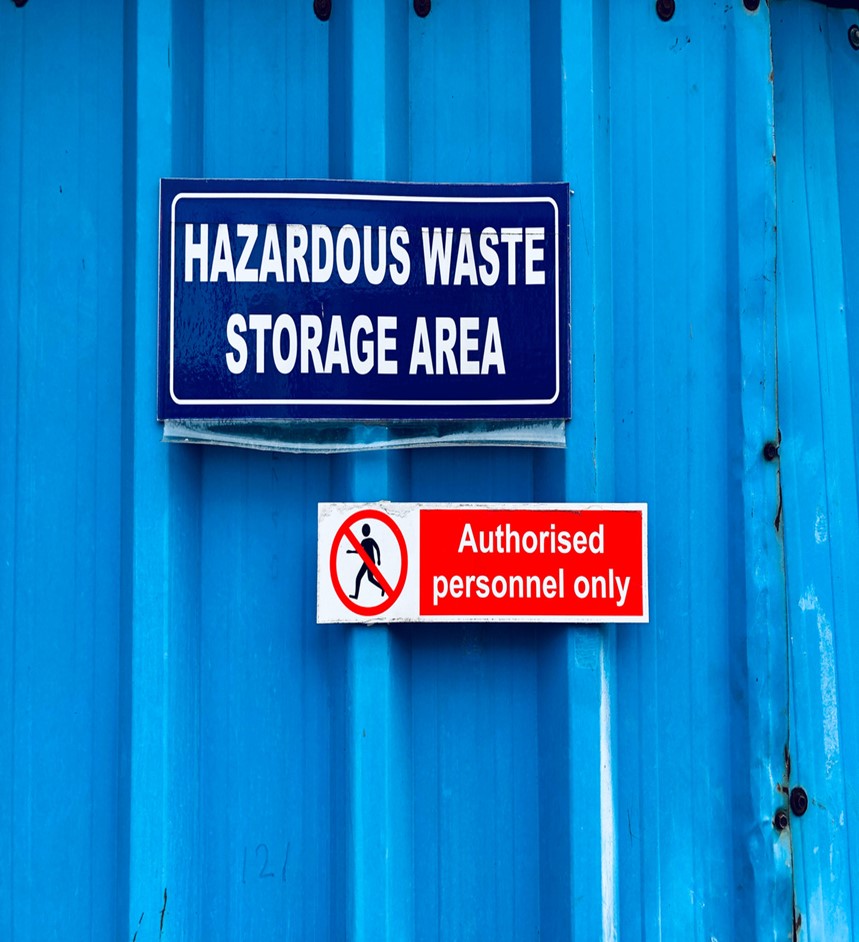Workplace Safety Standards
By Mairis Ramos, Director of OSHA Education/Environmental Manager (Tulsa, OK)
Mairis Ramos hales from Venezuela as an Industrial Engineer with 9 years of experience in Safety, Environment and Occupational Health. Her ability to implement accident reduction programs is a testament to her commitment to excellence and innovation in the field of industrial engineering.
As of March 26, 2025, the Occupational Safety and Health Administration (OSHA) has implemented several significant changes affecting workplace safety regulations:

Adjusted Civil Penalties (Effective January 15, 2025):
On November 2, 2015, the Federal Civil Penalties Inflation Adjustment Act Improvements Act of 2015 was enacted, which further amended the Federal Civil Penalties Inflation Adjustment Act of 1990 as previously amended by the 1996 Debt Collection Improvement Act (collectively, the “Prior Inflation Adjustment Act”), to improve the effectiveness of civil monetary penalties and maintain their deterrent effect. The Inflation Adjustment Act required agencies to: (1) adjust the level of civil monetary penalties with an initial “catch-up” adjustment through an interim final rule and (2) make subsequent annual adjustments for inflation, no later than January 15 of each year.
The cost-of-living adjustment multiplier for 2025, based on the Consumer Price Index for All Urban Consumers for October 2024 (not seasonally adjusted), is 1.02598. To compute the 2025 annual adjustment, the Department multiplied the most recent penalty amount for each applicable penalty by the multiplier, 1.02598 and rounded to the nearest dollar. The adjustment factor of 1.02598 is consistent across the minimum and maximum penalties set forth in the Occupational Safety and Health Act and the FOM.
Termination of COVID-19 Healthcare Rulemaking (Effective January 15, 2025):
On June 21, 2021, OSHA issued an Emergency Temporary Standard to protect workers from COVID-19 in healthcare settings, which also served as a proposed rule on which OSHA requested comments. The agency received public input on this proposal during multiple comment periods and public hearings from June 2021 through May 2022. OSHA submitted a draft final COVID-19 rule to the White House Office of Management and Budget on Dec. 7, 2022.
On April 10, 2023, President Biden signed into law House Joint Resolution 7, which terminated the national emergency related to the COVID-19 pandemic.
With today’s announcement, OSHA is now terminating the rulemaking because the most effective and efficient use of agency resources to protect healthcare workers from occupational exposure to COVID-19, as well as a host of other infectious diseases, is to focus its resources on the completion of Infectious Diseases rulemaking for healthcare.
Extension of Public Comment Period for Heat Injury and Illness Prevention Rule (Extended to January 14, 2025):
On August 30, 2024, OSHA published in the Federal Register a Notice of Proposed Rulemaking (NPRM) for Heat Injury and Illness Prevention in Outdoor and Indoor Work Settings. The proposed standard would apply to all employers conducting outdoor and indoor work in all general industry, construction, maritime, and agriculture sectors where OSHA has jurisdiction. The standard would require employers to create a plan to evaluate and control heat hazards in their workplace. It would clarify employer obligations and the steps necessary to effectively protect employees from hazardous heat.

The public comment period for the NPRM was to close on December 30, 2024, 120 days after publication of the NPRM. However, OSHA received requests from stakeholders to extend the public comment period. Stakeholders requested additional time to carefully review the questions in the NPRM, gather data, and prepare their submissions. Several noted that the current deadline falls during the holiday season, when personal schedules may make finalizing comments difficult.
OSHA agrees to an extension of the public comment period and believes a 15-day extension is sufficient and appropriate to balance the agency's need for stakeholder input with the agency's desire to proceed with the rulemaking in a timely manner. The comment period extension will also avoid the comment deadline falling during the holiday season. Therefore, OSHA is extending the public comment period until January 14, 2025.
Proposed Rulemaking for Emergency Response Activities:
OSHA proposed a rule to ensure that workers involved in emergency response activities receive appropriate protection from the hazards they are likely to encounter on the job. Notably, the scope of protected workers under the proposed rule would be expanded to include those who provide emergency medical services and technical search and rescue.

Final Rule to Amend the Hazard Communication Standard (Effective July 19, 2024):
OSHA has issued a final rule that updates the Hazard Communication Standard (HCS) to align primarily with the seventh revision of the United Nations’ Globally Harmonized System of Classification and Labelling of Chemicals (GHS). The final rule was published on May 20, 2024 and takes effect on July 19, 2024.
The updated standard will improve the standard’s effectiveness by better informing employees about chemical hazards in the workplace. This final rule will increase worker protections and reduce the incidences of chemical-related occupational illnesses and injuries by further improving the information on the labels and safety data sheets for hazardous chemicals. The final rule will also address issues arising since implementation of the 2012 standard and improve alignment with other federal agencies and Canada.
Final Rule to Improve Tracking of Workplace Injuries and Illnesses:
OSHA has published a final rule requiring certain establishments to electronically submit to OSHA detailed information about each recordable injury and illness entered on their previous calendar year's OSHA 300 Log and 301 Incident Report forms (29 CFR 1904.41). This includes the date, physical location, and severity of the injury or illness; details about the worker who was injured; and details about how the injury or illness occurred. Only establishments with 100 or more employees, in designated industries listed in Appendix B to Subpart E of 29 CFR Part 1904, are required to submit this detailed information. One way for establishments to determine whether they are required to submit these data is by using OSHA’s ITA Coverage Application.
